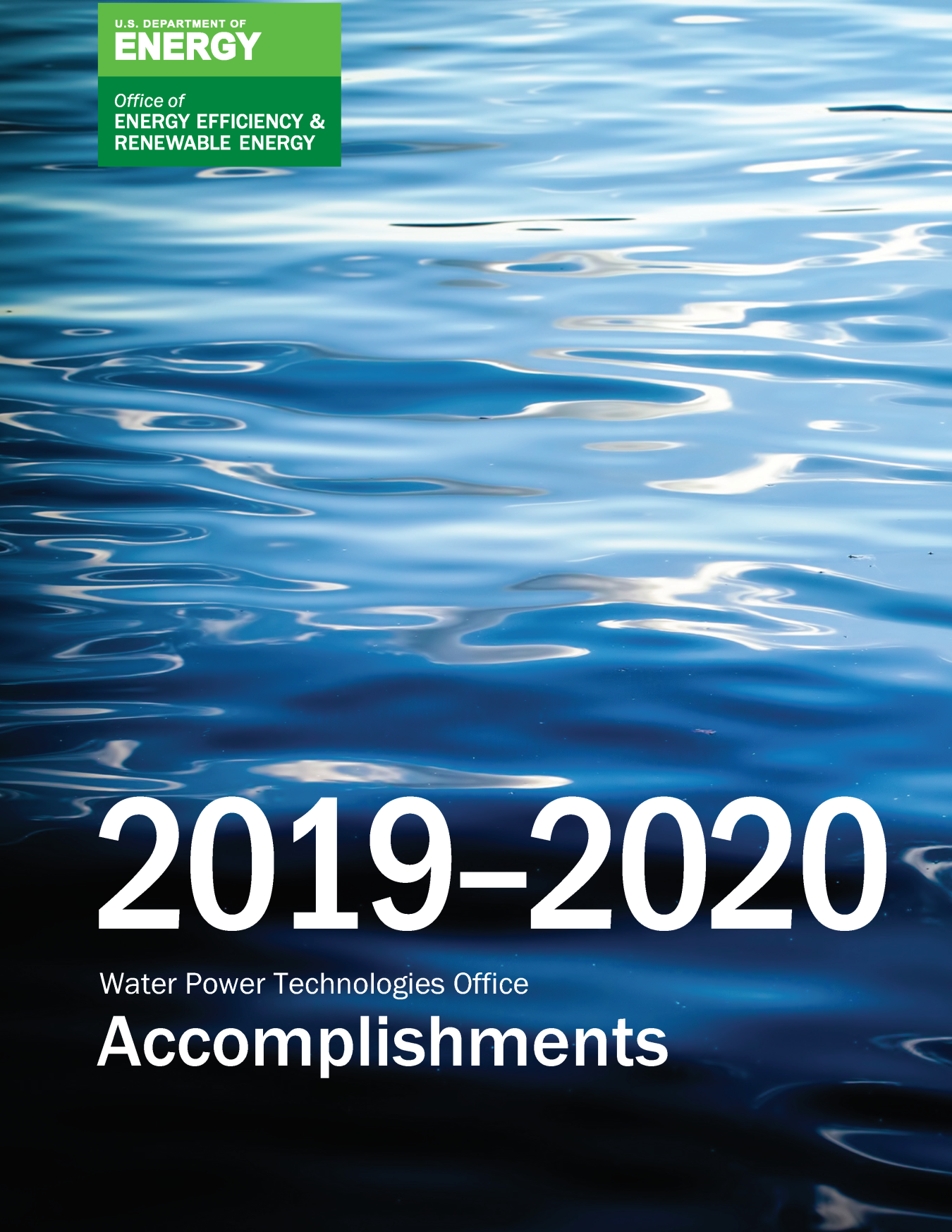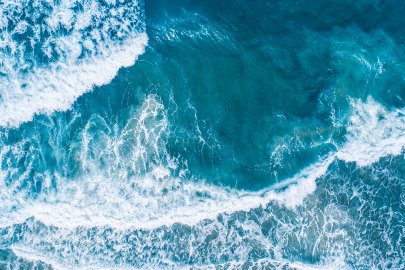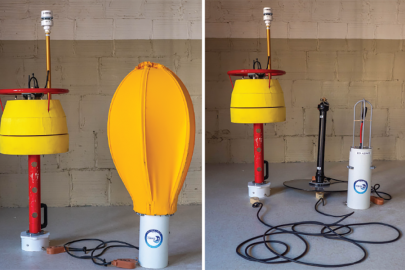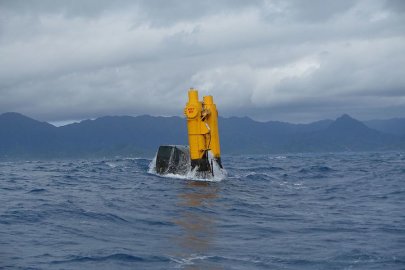The PNNL-led Triton Initiative is supporting the development of more precise and cost-effective marine energy environmental monitoring technologies.
Water Power Technologies Office
January 13, 2021The PNNL-led Triton initiative, designed to support the development and testing of more precise and cost-effective environmental monitoring technologies for marine energy, provided the technical support needed to finalize various stages of testing for several competitively selected WPTO projects, including the University of Washington’s Drifting Acoustic Instrumentation SYstem (DAISY), the third-generation Adaptable Monitoring Package (3G-AMP), and Integral Consulting’s Benthic Monitoring Study. Between FY 2019 and FY 2020, these projects leveraged PNNL’s Marine and Coastal Research Laboratory (MCRL) to gather important environmental data and demonstrate performance prior to deploying in higher energy environments. FY 2020 also saw substantial progress in the Triton Field Trials project, which is designed to advance marine energy environmental monitoring by developing recommended guidelines for data collection and analysis.
Often, the permits to operate a marine energy project require documenting the effects of underwater noise on marine life. While a recent International Electrotechnical Commission (IEC) technical specification (IEC TS 62600-40) helps standardize this process, it can still be challenging to identify the noise produced from marine energy converters against the backdrop of natural underwater sounds. This uncertainty can lead to inaccuracies in determining the environmental risks associated with deploying and operating converters. DAISY addresses these challenges through a rapidly deployable, modular system optimized for high-energy marine environments. The DAISY device is equipped with a hydrophone that records ocean sounds (while minimizing motion between itself and surrounding water), a global positioning system for position information, and meteorological equipment to characterize wind conditions—all integrated using low-cost electronics. There are two DAISY variants: one for measuring current environments (C-DAISY), and another for wave environments (W-DAISY).
In FY 2019, MCRL and several other locations, including the Clallam Bay in Washington and the Wave Energy Test Site in Hawaii, served as testing locations for the DAISY device, which successfully demonstrated system functionality, ease of deployment and recovery, and integration of all sensors. Additionally, PNNL and the University of Washington have developed an application that allows researchers to track DAISY devices in real time and check their status, allowing for ease of use and reliability.
MCRL was also leveraged to advance the 3G-AMP, a system equipped with an integrated set of sensors designed to collect environmental data to support detection and classification of marine animals. Building off of previous tests supported by WPTO, the 3G-AMP includes multibeam sonars, an acoustic Doppler current profiler, an array of hydrophones, a stereo-optical camera, antibiofouling systems, and more. With logistical and field support from the Triton team, the University of Washington was able to test the efficacy of these tools during a 5-month deployment at MCRL in FY 2019, signifying the first deployment of a system with this level of complexity and controllability at a marine energy site.
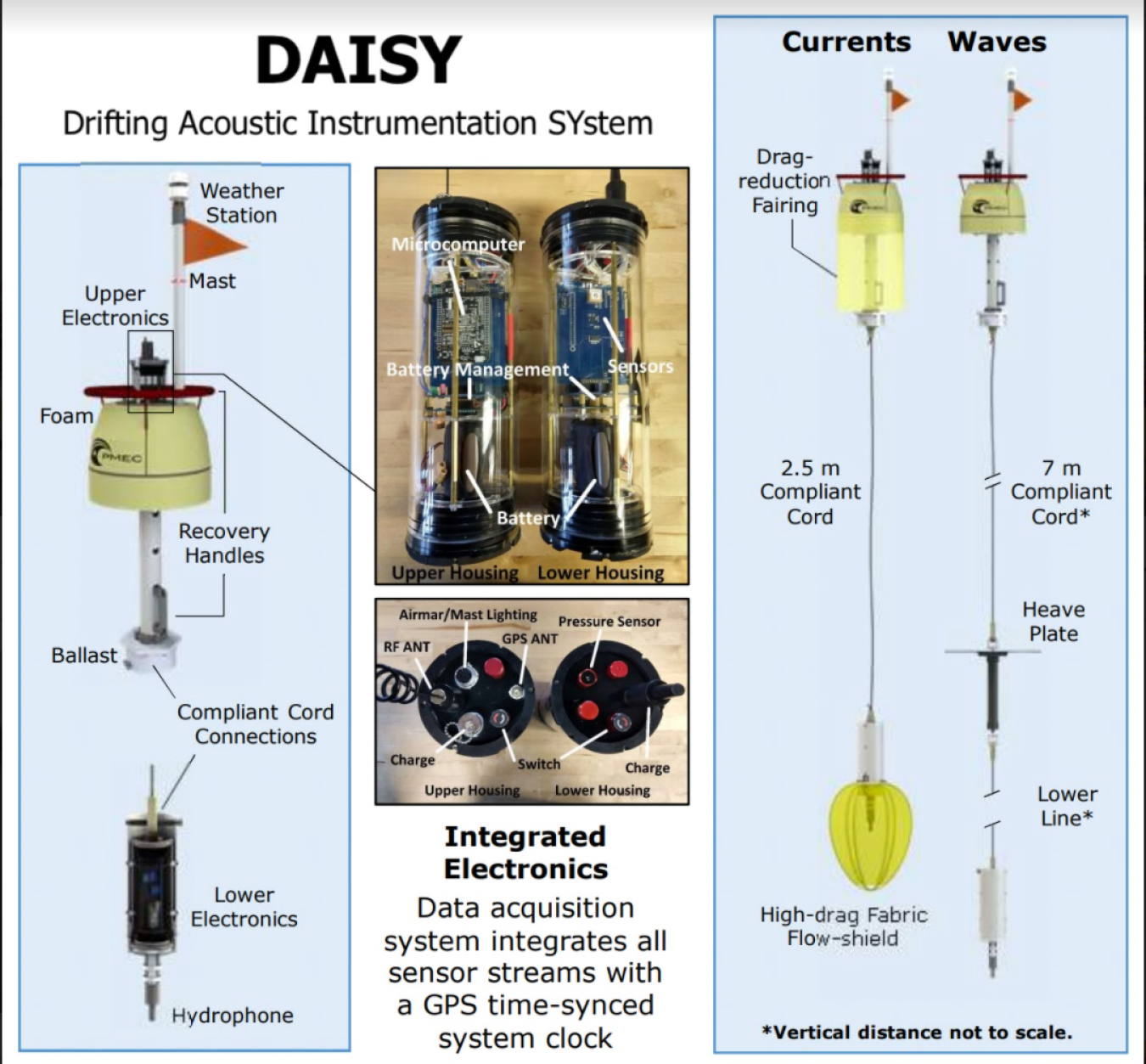
To reduce the costs and risks of deploying in high-energy environments, the project team redesigned the 3G-AMP system around a modular architecture, allowing the device’s sensor head to be more easily deployed and/or integrated with a range of systems, such as wave energy converters and stand-alone landers, than previous models. The 3G-AMP package performed well throughout testing, with 97% operational uptime during an additional 4-month deployment in the Sequim Bay channel, and it accomplished a significant milestone in automatically classifying fish schools, diving birds, and seals with high accuracy rates. An additional open-water, long-term test deployment is anticipated, as the 3G-AMP moves toward commercialization.
Also concluded in FY 2020 is the Triton-supported Integral PacWave Benthic monitoring project. Initiated in 2016, the project developed a new broad-scale seafloor habitat mapping approach, which is based on established acoustic and imaging survey methods. The approach is cost-effective, repeatable, and generates high-resolution benthic habitat maps for environmental monitoring at marine energy sites. Over a number of years, researchers conducted a series of surveys at various locations, including the PacWave South Energy Test Site. The results provided a detailed and contiguous mosaic of physical and biological habitat conditions at the future PacWave site while also demonstrating a process that can detect whether a marine energy device alters seafloor physical or biological conditions.
Finally, Triton made foundational advancements within the Triton Field Trials project in FY 2020, completing a literature review that evaluated existing models and their limitations for collision risk, electromagnetic fields, underwater noise, changes to habitat, displacement of marine species, and changes to physical systems. This review resulted in a report to DOE and has been submitted for publication in a special issue of the Journal of Marine Science and Engineering. While field testing has been delayed because of COVID-19, in FY 2020, the project team finalized the locations that will be used for field testing and determined the methodologies that will be evaluated for collision risk, underwater noise, changes in habitat, and electromagnetic fields. Looking ahead, the Triton project team hopes to commence field testing in 2021.
For additional information, contact TJ Heibel.


